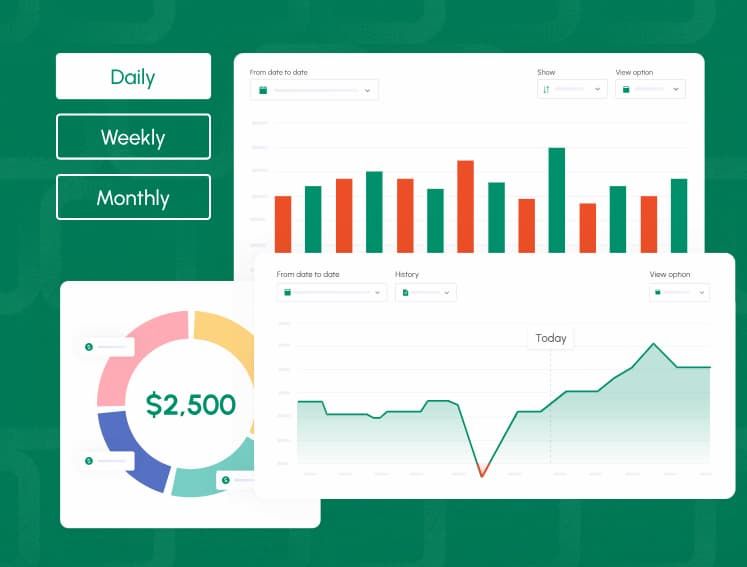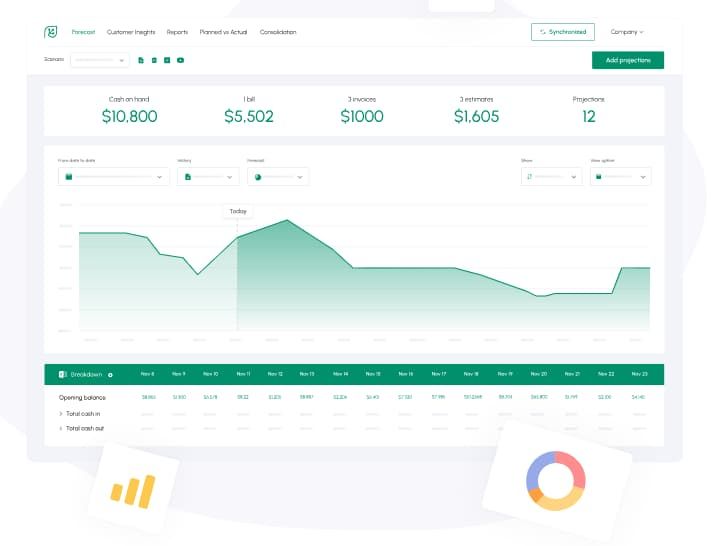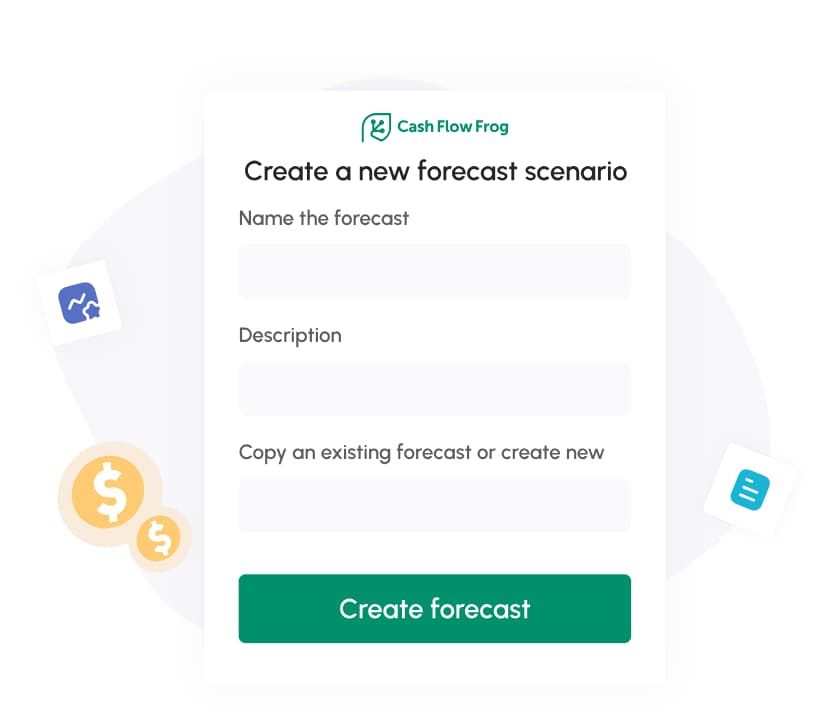Economic Profit
Economic Profit: What It Really Measures and How to Use It

Few moments are more frustrating for owners than a “profitable” business that feels broke.
Understanding the economic profit definition can help you address this confusion. It shows whether your business truly creates value after covering every visible and hidden cost. If you’ve ever asked yourself what is economic profit and how it differs from accounting profit, the answer lies in understanding both explicit and implicit costs. This simple idea changes how owners view performance and helps them make smarter choices about where to grow next.
What Is Economic Profit?
When learning about economic profit, business owners discover that it measures value after accounting for both direct expenses and hidden opportunity costs. In simple terms, what is economic profit? It’s the true measure of value creation once you subtract not just bills, but also the cost of time, capital, and missed alternatives.
Economic profit is calculated after subtracting explicit and implicit costs. Explicit costs are the direct operating expenses a business must cover. Implicit costs reflect sacrificed opportunities. They include the salary owners could earn at another company and the return on their capital from safe investments.
Economic profit represents reward after paying hidden costs that both time and risk absorb. Owners use this perspective when deciding whether current operations justify effort, invested capital, and long-term risk.
When economic profit remains positive, the business produces value beyond what the owner and investors expect. When economic profit falls into negative territory, capital would work harder in another opportunity, even if accounting profit looks positive.
Understanding what economic profit is helps owners recognize when growth stretches resources rather than strengthening them.

Image: Monthly view of total cash on Cash Flow Frog | source: cashflowfrog.com
Is Economic Profit the Same as Total Revenue?
No, economic profit is not the same as total revenue.
Revenue measures customer demand. However, revenue rarely reveals how much money remains after covering the cost of operations.
Growth often demands more employees, vehicles, equipment, or product inventory. These assets tie up capital. Discounts may fuel volume but shrink margins. Extended payment terms delay cash.
In these situations, revenue can rise while economic profit falls. Economic profit helps owners see how sales interact with capital and margin, rather than assuming higher revenue always means stronger performance.
Economic Profit vs. Accounting Profit
Accounting profit measures whether a company covers its bills and operating costs. It confirms whether a business stays afloat and generates a surplus after paying explicit costs. This measure supports tax reporting and ensures regulatory compliance.
Economic profit introduces the cost of capital and opportunity. A company may generate accounting profit but still fail to compensate investors for risk. Economic profit asks whether the business outperforms what owners could earn with similar effort in another company or by investing capital in lower-risk assets.
In corporate finance, this lens changes behavior. Owners who rely only on accounting profit may continue activities that feel profitable but fail to create value. Economic profit prevents capital drift, reduces wasteful spending, and encourages owners to prioritize initiatives with lasting return. To fully grasp what is economic profit and how it impacts decision-making, seeing it in action with real-time data is essential.
Sign up today to fully understand what economic profit is
Sign up todayEconomic Profit Formula and Components
The economic profit formula helps business owners see whether their company creates real value after covering all visible costs and the hidden value of their time and money. It goes deeper than regular profit numbers because it considers what an owner gives up to run the business.
For smaller companies, the economic profit formula looks like this:
Economic Profit Formula = Total Revenue − Explicit Costs − Implicit Costs
- Explicit costs are direct bills you pay, such as payroll, rent, supplies, and software.
- Implicit costs represent what you give up, like the salary you could earn working somewhere else or the return your money could earn in a basic investment.
This simple illustration shows how to find economic profit by recognizing both visible expenses and hidden opportunity costs:
A business earns 500,000 dollars in revenue for the year. It pays 320,000 dollars in direct expenses. The owner estimates they could earn 80,000 dollars by working at another company.
| Item | Amount (USD) |
|---|---|
| Total Revenue | 500,000 |
| Explicit Costs | 320,000 |
| Implicit Costs | 80,000 |
| Economic Profit | 100,000 |
This means that after paying bills and factoring in what the owner gives up, the business creates 100,000 dollars in real value.
Larger companies often use a more detailed version called EVA (economic value added). Here’s how to calculate economic profit using this approach:
EVA = NOPAT − (Invested Capital × WACC)
Here’s what those terms mean in simple language:
- NOPAT is the profit the company earns from normal operations after taxes.
- Invested Capital includes equipment, buildings, inventory, and money tied up in daily operations.
- WACC represents the return lenders and investors expect, given the business's risk.
When NOPAT exceeds the capital charge, the business creates economic profit. If it falls below that level, the business uses its capital poorly.
How Debt Financing Works Day-to-Day
Debt fuels growth by helping owners purchase equipment, open new locations, or cover slow-paying invoices. Delayed customer payments make this harder. Money that looks earned on paper may take weeks to appear in the bank, while interest continues to accrue. Debt reduces economic profit by increasing capital costs, which raises the return the business must earn to break even.
Micro view
Small businesses often rely on lines of credit. Interest adds up daily, leaving less money for marketing, training, and upgrades. Over time, this weakens performance and reduces economic profit.
Corporate/EVA view
Larger companies use debt more strategically. They monitor borrowing levels, interest rate changes, and refinancing options. Lower rates can reduce capital costs and improve economic profit. When rates climb, investor expectations rise, and financial profit can shrink even without changes in revenue. Boards adjust growth plans and spending to protect value.

Image: Daily, weekly, and monthly view of financial data on Cash Flow Frog | source: cashflowfrog.com
What Is Positive and Negative Economic Profit?
Positive economic profit means the business earns more than the minimum return expected on its capital. Negative economic profit means the business would create more value if that capital were used elsewhere. When negative results continue, owners often adjust pricing, trim overhead, or move away from weaker products or services. Economic profit reveals these warning signs early, before traditional reports show problems.
How to Calculate Economic Profit (Step by Step)
When learning how to find economic profit, the goal is to compare the return the business generates with what investors and lenders expect.
| How to calculate economic profit | What to do | Example Values (USD) |
|---|---|---|
| Identify Operating Income | List profit from normal business activity before taxes | 1,000,000 |
| Apply Taxes | Multiply income by (1 − tax rate) to find NOPAT | Tax rate: 25% → NOPAT = 750,000 |
| Measure Invested Capital | Add equipment, buildings, and net working capital | 5,000,000 |
| Average Beginning & Ending Balances | Smooth out year-to-year changes | Beginning: 4,800,000 / Ending: 5,200,000 → Average: 5,000,000 |
| Estimate WACC | Combine the cost of debt and equity expectations | 10% |
| Determine ROIC | Divide NOPAT by invested capital | 750,000 ÷ 5,000,000 = 15% |
| Calculate the Spread | Subtract WACC from ROIC | 15% − 10% = 5% |
| Multiply Spread by Capital | Shows true value created after expectations | 5% × 5,000,000 |
Using the economic profit calculation formula, you get $ 250,000.
Common Mistakes and Pitfalls
Many businesses appear profitable at a glance, yet small blind spots quietly drain value in the background. These issues rarely appear in standard reports, making them easy to overlook until they limit growth.
- Ignoring the value of the owner’s labor, which makes economic profit look higher than it actually is.
- Allowing slow-paying customers and holding too much inventory, which quietly ties up cash and increases invested capital.
- Using outdated interest assumptions, which becomes risky when borrowing costs rise and capital charges increase.
- Mixing personal expenses with business assets, which inflates invested capital and confuses performance results across divisions.
- Assuming future margins will improve without evidence, which leads to capital being committed based on hope instead of performance
A profit economics example that illustrates these pitfalls involves a company celebrating growing orders without noticing that slow receivable cycles lock cash, reducing real value creation.
Industry Nuances: Not All WACCs Are Equal
The weighted average cost of capital changes based on how an industry earns money and manages risk.
- Utility companies often hold long-term contracts and steady customer demand, so lenders accept lower returns.
- Software startups face shifting trends and short product life cycles, so investors expect higher returns to offset the uncertainty.
- Manufacturing and logistics firms require large investments in equipment and inventory, which increases the capital charge and forces the return on invested capital to work harder.
Owners comparing opportunities should note that a project with healthy returns in a stable region can become marginal when risk increases elsewhere. The economic profit definition varies slightly across industries because capital risk and expected return rarely remain equal.
Economic Profit vs. Total Revenue Growth Narratives
Revenue growth feels exciting, but bigger sales do not always mean the business becomes stronger. Discounts can push volume while cutting into profits. Speeding up delivery can require more staff. Stocking extra products ties up cash that feels unavailable when needed. Revenue alone cannot confirm real value. Sometimes, small price adjustments, smoother processes, and loyal customers improve economic profit more than rapid sales growth. Owners focused on economic profit look for growth that strengthens the business, not growth that only inflates sales numbers.
Forecasting Economic Profit
Forecasting helps owners plan ahead rather than react to issues. Revenue estimates should consider seasonal demand and competition, while expense forecasts account for rising wages, insurance, and software costs.
Working capital projections show how much cash daily operations require. Adding equipment or inventory can temporarily reduce returns. When returns fall and capital costs stay the same, economic profit declines.
Combining economic profit projections with cash flow forecasting gives a fuller picture, showing not just profitability, but when cash actually becomes available to fund growth.
Check out Cash Flow Frog’s forecasting tools
Check now
Image: Business cash flow forecast dashboard on Cash Flow Frog| source: cashflowfrog.com
Use Cases: Capital Budgeting and Portfolio Decisions
Economic profit helps owners direct capital where it performs best. Common use cases include:
Equipment upgrades Approving a machine that increases output without adding labor costs.
Product lineup changes Shifting inventory toward higher-margin items and reducing low-turn products.
Location review Closing a store with weak foot traffic and investing more in a busy location.
Software improvements Upgrading invoicing tools to speed up customer payments and improve cash flow.
Lease renegotiation Reducing rent to free capital for marketing or staffing needs.
Owners who evaluate decisions through economic profit focus on return per dollar, not activity alone, leading to more efficient growth. Scenario planning supports these decisions by showing how different choices could affect cash flow and return under changing market conditions.

Image: Scenario planning feature on Cash Flow Frog | source: cashflowfrog.com
Build for Value: Track Economic Profit Not Just Earnings
Companies that monitor economic profit develop stronger financial habits. Managers review how pricing affects margin, how inventory ties up cash, and how labor capacity supports demand.
Incentives linked to economic profit encourage better decisions across teams. Owners also gain sharper awareness of capital friction, identifying where resources slow down and where working capital becomes trapped. These insights reduce wasted effort and guide smarter allocation.
When paired with cash flow software like Cash Flow Frog, owners gain clearer visibility into timing and capital needs. Customers benefit from steady reinvestment and improved service. Competitive positioning strengthens as the company focuses on value creation rather than volume alone.
Translate economic profit meaning into real value with smarter financial projections
Read moreRelated Terms
FAQ
Looking for more help?
Visit our help center to find answers to your questions about CashFlowFrog.
Trusted by thousands of business owners
Start Free Trial Now